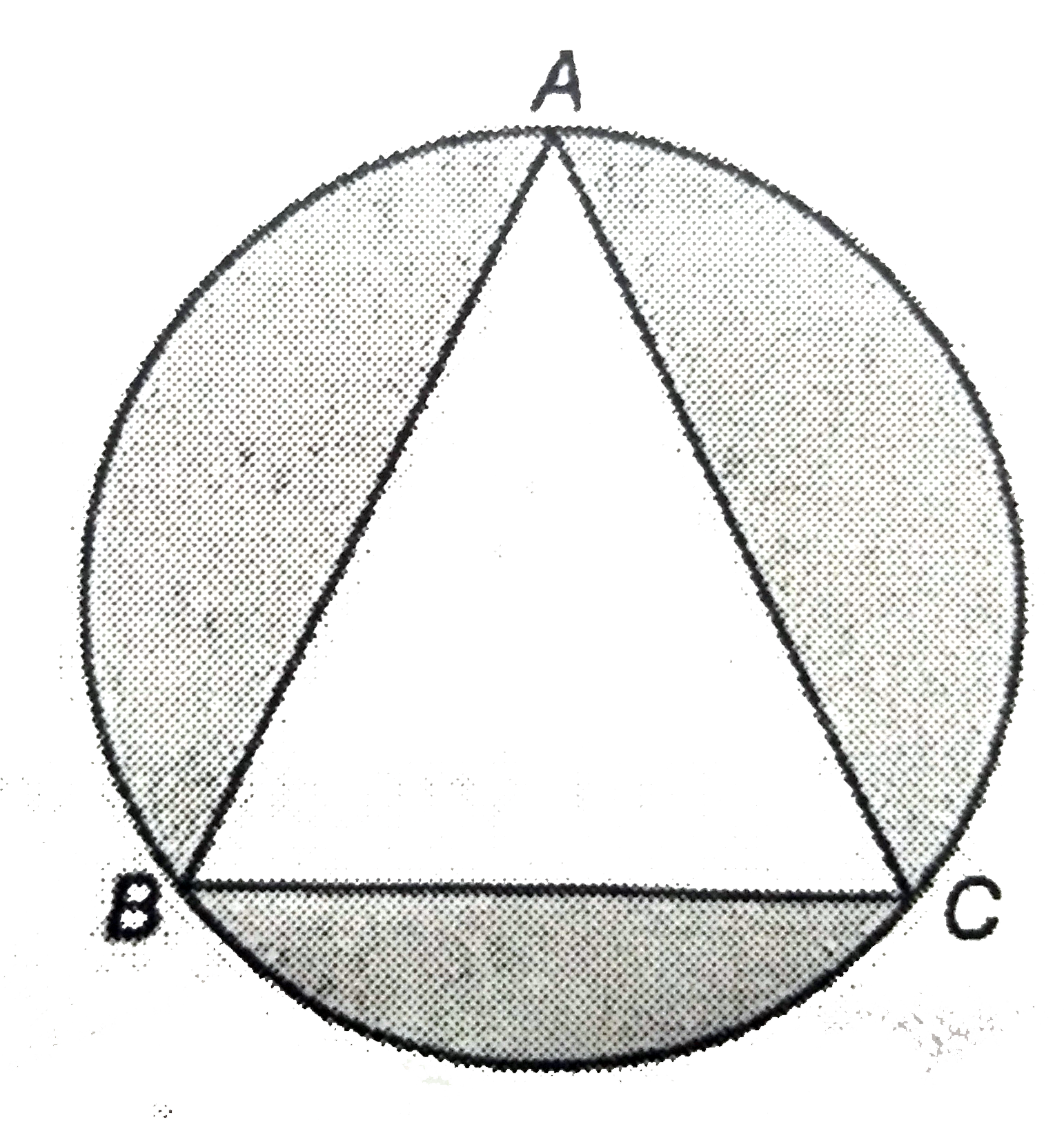The sides of a quadrilaterial which can be inscribed in a circle are 3 cm, 3cm, 4cm and 4cm, find the radii of the in-circle and circumcircle.
To find the radii of the in-circle and circumcircle of a quadrilateral that can be inscribed in a circle with sides measuring 3 cm, 3 cm, 4 cm, and 4 cm, we can follow these steps:
Step 1: Identify the sides of the quadrilateral
Let the sides of the quadrilateral be:
- AB = 3 cm
- BC = 3 cm
- CD = 4 cm
- DA = 4 cm
Step 2: Verify that the quadrilateral can be inscribed in a circle
For a quadrilateral to be inscribed in a circle, the sum of the lengths of opposite sides must be equal.
- Check: AB + CD = 3 + 4 = 7 cm
- Check: BC + DA = 3 + 4 = 7 cm
Since both sums are equal, the quadrilateral can indeed be inscribed in a circle.
Step 3: Calculate the length of diagonal BD
Since triangles ABD and BCD are congruent by symmetry, we can use the Pythagorean theorem to find the length of diagonal BD.
- Using the sides AB and AD for triangle ABD:
BD2=AB2+AD2
BD2=32+42=9+16=25
BD=√25=5 cm
Step 4: Find the radius of the circumcircle
The radius R of the circumcircle is half the length of the diagonal BD:
R=BD2=52=2.5 cm
Step 5: Calculate the area of the quadrilateral
The area A of a cyclic quadrilateral can be calculated using Brahmagupta’s formula:
A=√(s−a)(s−b)(s−c)(s−d)
where s is the semi-perimeter:
s=AB+BC+CD+DA2=3+3+4+42=7 cm
Now substituting the values into the area formula:
A=√(7−3)(7−3)(7−4)(7−4)=√(4)(4)(3)(3)=√144=12 cm2
Step 6: Find the radius of the in-circle
The radius r of the in-circle can be calculated using the formula:
r=As
Substituting the area and semi-perimeter:
r=127≈1.714 cm
Final Answers
- Radius of the circumcircle R=2.5 cm
- Radius of the in-circle r≈1.714 cm
Let the sides of the quadrilateral be:
- AB = 3 cm
- BC = 3 cm
- CD = 4 cm
- DA = 4 cm
For a quadrilateral to be inscribed in a circle, the sum of the lengths of opposite sides must be equal.
- Check: AB + CD = 3 + 4 = 7 cm
- Check: BC + DA = 3 + 4 = 7 cm
Since triangles ABD and BCD are congruent by symmetry, we can use the Pythagorean theorem to find the length of diagonal BD.
- Using the sides AB and AD for triangle ABD:
BD2=AB2+AD2
BD2=32+42=9+16=25
BD=√25=5 cm
The radius R of the circumcircle is half the length of the diagonal BD:
R=BD2=52=2.5 cm
The area A of a cyclic quadrilateral can be calculated using Brahmagupta’s formula:
A=√(s−a)(s−b)(s−c)(s−d)
where s is the semi-perimeter:
s=AB+BC+CD+DA2=3+3+4+42=7 cm
Now substituting the values into the area formula:
A=√(7−3)(7−3)(7−4)(7−4)=√(4)(4)(3)(3)=√144=12 cm2
The radius r of the in-circle can be calculated using the formula:
r=As
Substituting the area and semi-perimeter:
r=127≈1.714 cm
- Radius of the circumcircle R=2.5 cm
- Radius of the in-circle r≈1.714 cm
Similar Questions
The area of an equilateral triangle inscribed in a circle of radius 4cm, is
View SolutionThe area of the square that can be inscribed in a circle of radius 8 cm is
View SolutionThe side of a triangle are 22 cm, 28 cm, and 36 cm So, find the area of a the circumscribed circle.
View SolutionABC is an equilateral triangle inscribed in a circle of radius 4 cm. Find the area of the shaded portion.

View SolutionA square is inscribed in a circle of radius 7 cm. Find the area of the square.
View SolutionFind the area of a circle of radius 4.2 cm
View SolutionThe lengths of three consecutive sides of a quadrilateral circumscribing a circle are 4 cm, 5cm, and 7cm respectively. Determine the length of the fourth side.
View SolutionA reactangle with one side 4 cm is inscribed in a circle of radius 2.5 cm. Find the area of the rectangle
View SolutionThe area of the circle that can be inscribed in a square of side 6 cm is
View SolutionA circle is inscribed in a square of area 784cm2 Find the area of the circle.
View Solution
